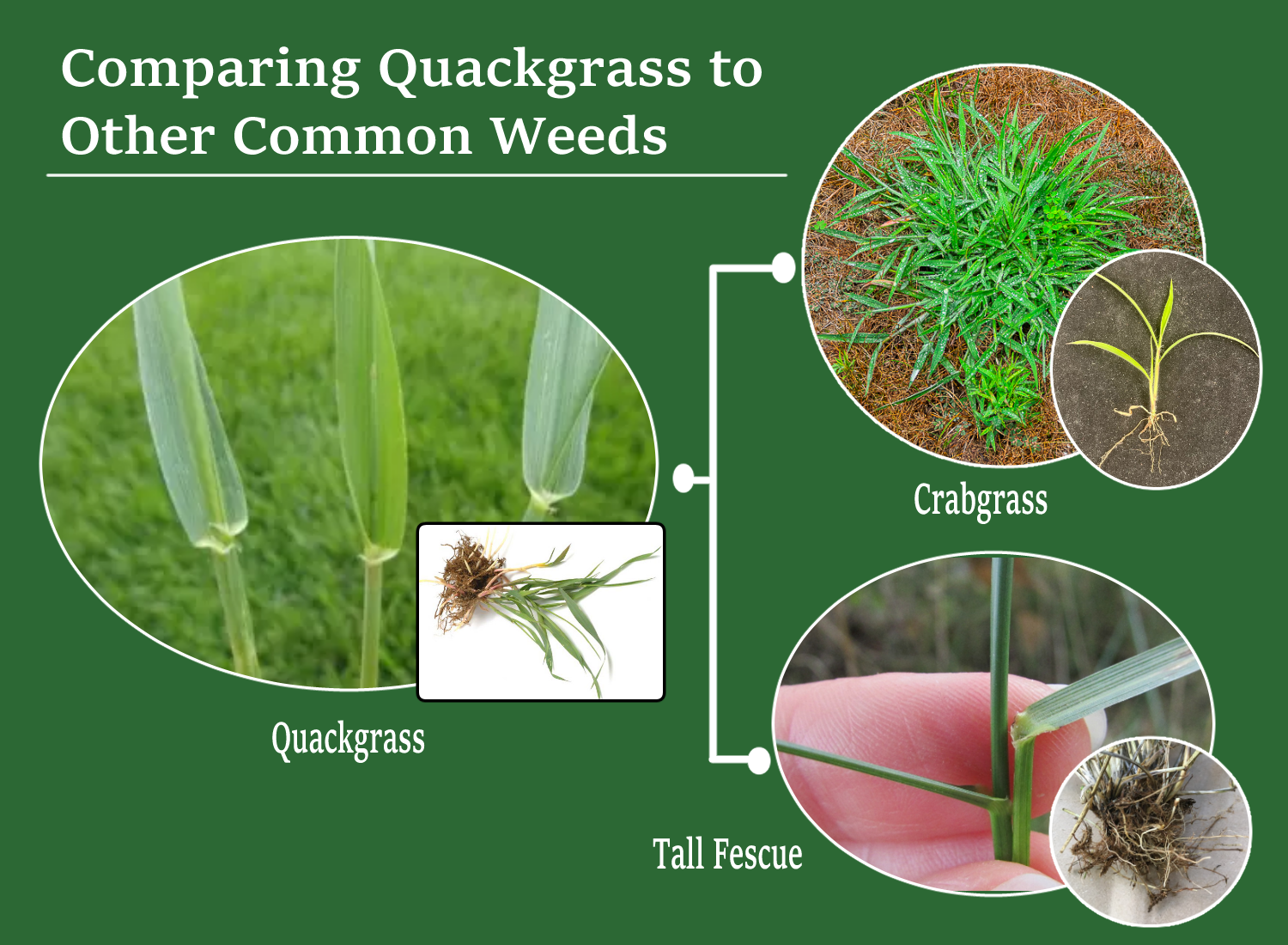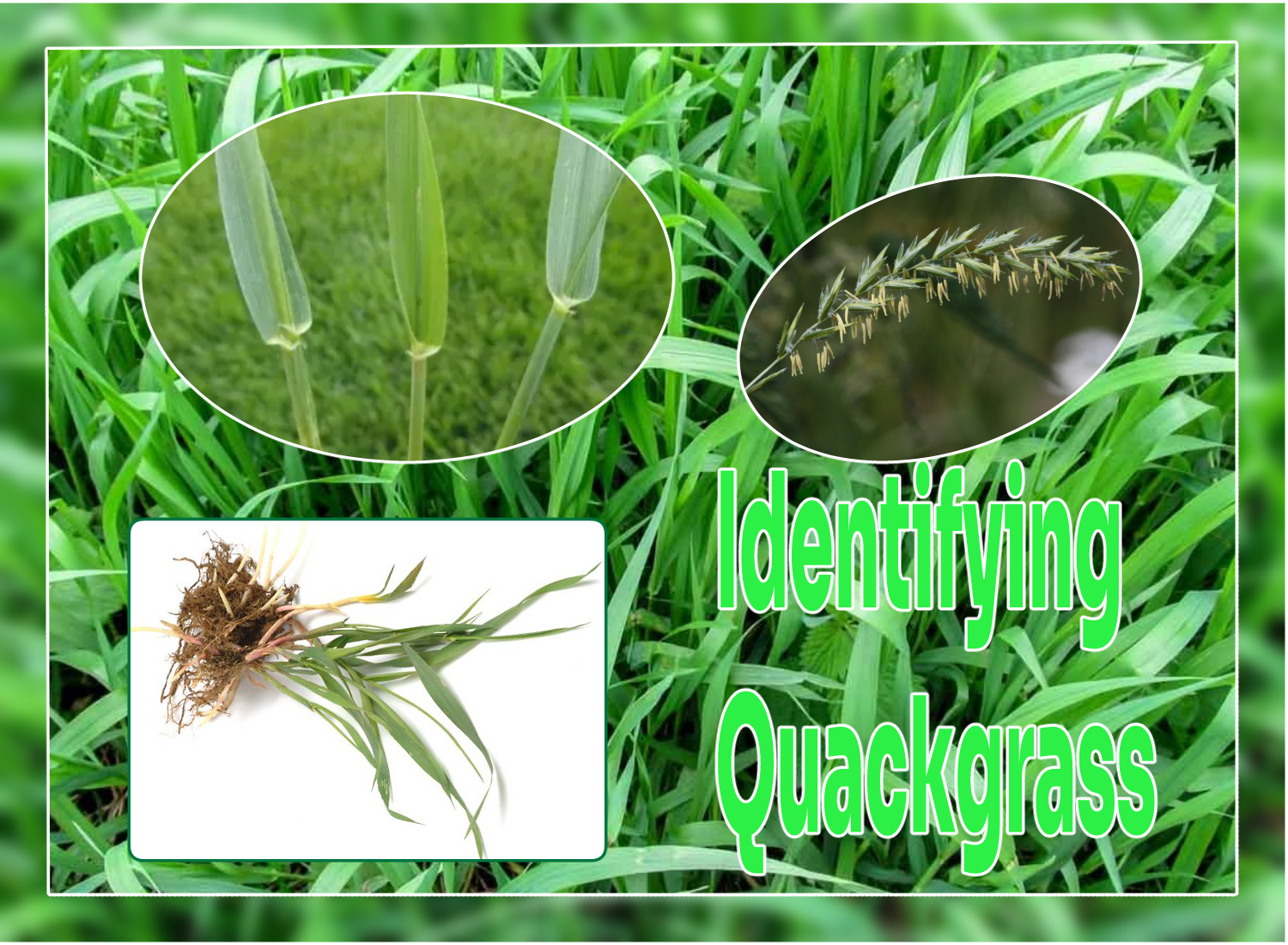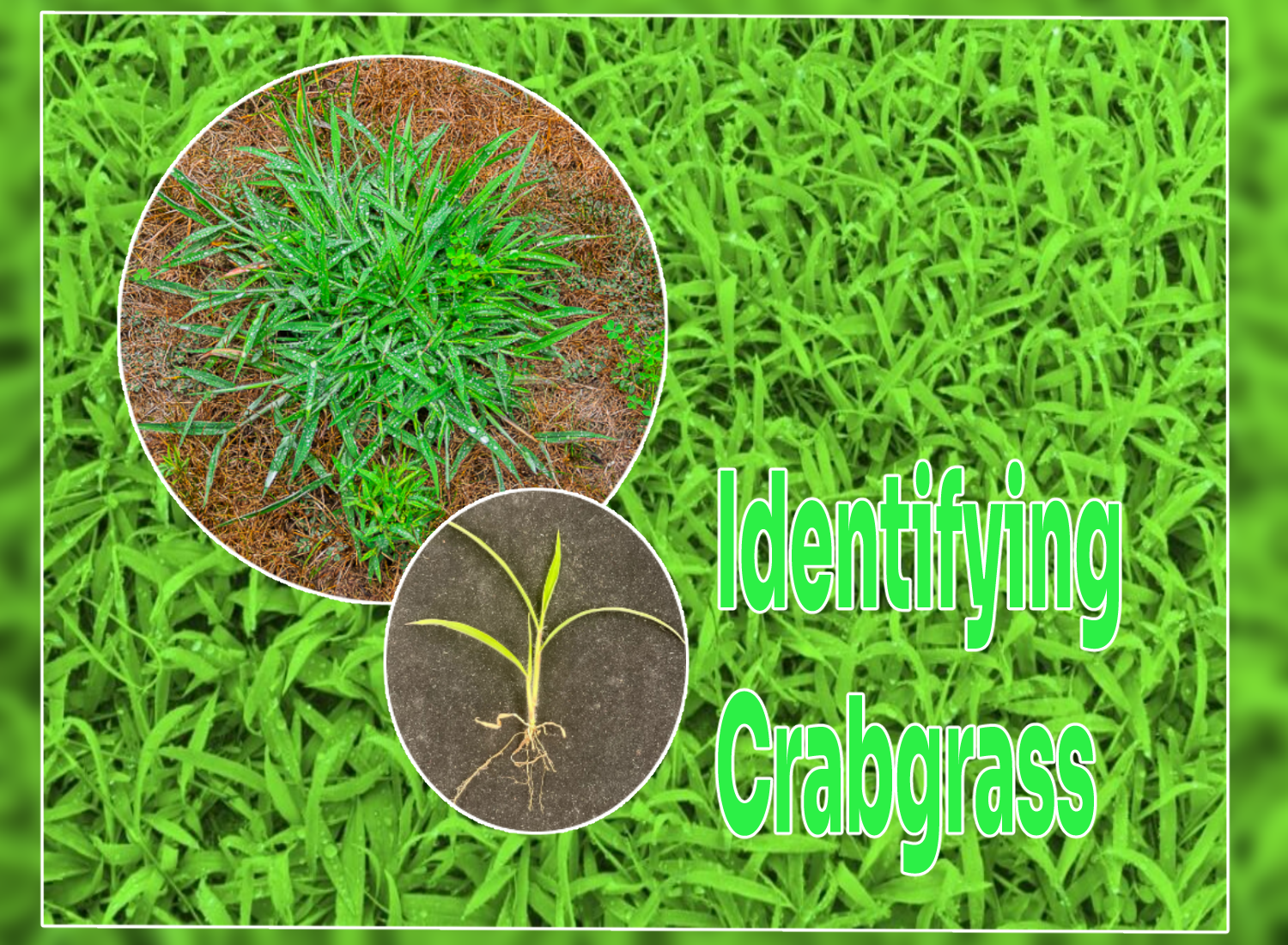For many homeowners, distinguishing between various grasses and weeds on the lawn can be challenging, especially when it comes to the ubiquitous quackgrass and crabgrass.
Quackgrass and crabgrass look somehow alike, but they are quite different. Quackgrass is a perennial grass with long, tapered blades, while crabgrass is an annual with broader leaves. Both can be invasive, but they have distinct growth habits and appearances.
Below, we’ll explore the key characteristics, identification tips, control methods, and even alternative uses for these two invasive weeds. Get ready to become a lawn care expert and conquer the battle against quackgrass and crabgrass!

What we cover
ToggleKey takeaways
- Quackgrass and crabgrass have distinct characteristics, growth patterns, and preferred control methods.
- Herbicides, nitrogen fertilizers, and pre-emergent and post-emergent treatments are effective for controlling quackgrass & crabgrass infestations.
- Proper lawn care techniques can help prevent quackgrass & crabgrass invasions. They may also be used as alternative sources of food or ground cover.
Quackgrass characteristics

Here are the main characteristics of quackgrass:
- Quackgrass (Elymus repens) is a remarkably resilient cool-season perennial weed.
- It’s characterized by long underground stems, auricles, and creeping rhizomes, which make it difficult to control.
- With its deep root system, quackgrass can outcompete desirable lawn grasses like fescue, depriving them of essential nutrients and water.
- Moreover, quackgrass can release chemicals that inhibit the growth of other plants, making it particularly problematic for lawns and gardens.
- Tackling quackgrass is no easy task as regular weed killers often fall short. More specialized herbicides like Roundup are necessary to fight its invasive nature.
Identifying quackgrass
The question remains: amidst the sea of green in your lawn, how does one distinguish quackgrass? Look for its telltale signs:
- Tapered grass-blades
- Bare stem
- White rhizomes
Quackgrass tends to emerge early and has an upright growth habit, making it stand out from other grasses like tall fescue, which has a clumping growth pattern.
Although quackgrass can have either hairy or smooth sheaths and leaves, its distinct patches of foliage should help you spot the weed before it takes over your lawn.
Crabgrass characteristics

Here are the main characteristics of crabgrass:
- Crabgrass (Digitaria spp.) is an annual grass weed that flourishes in hot seasons and bare lawns.
- It is a non-native invader. Its ability to reproduce through thousands of seeds each season poses a significant challenge even for the most determined gardeners who use grass seed to maintain their lawn grass against grassy weeds and weed grasses.
Early identification and treatment of crabgrass can greatly boost the likelihood of successful removal, especially from lawns with cool-season grasses. This preventive approach helps avoid a more arduous elimination process.
Identifying crabgrass
Crabgrass can be tricky to identify, as it adapts its appearance to mimic surrounding grasses. However, there are some key features to look for:
- Crabgrass roots
- Stems emerging from the center
- Finger-like leaf arrangement (which is why it’s also known as finger grass)
Crabgrass differs from fescue grasses, which have a clumping growth habit and are often used as desirable lawn grasses. Keep an eye out for these distinguishing features to ensure you’re targeting the right weed and not harming your lawn’s healthy grasses.
Comparing quackgrass and crabgrass
After discussing the individual traits of both quackgrass and crabgrass, it’s time to draw a comparison between them.
Appearance
- Quackgrass: It has long, tapered blades and a rough texture.
- Crabgrass: It has smooth, broad leaves with a central vein that’s particularly prominent.
Lifecycle
- Quackgrass: Perennial, meaning it will return year after year from its roots.
- Crabgrass: Annual, germinating from seeds each year and dying off in the winter.
Root system
Quackgrass: Features underground stems called rhizomes.
Crabgrass: Has a shallow, fibrous root system.
Grasping the distinctions between these two weeds lays the foundation for effective management and lawn care.
Effective control methods for quackgrass and crabgrass
1. Quackgrass
- Cultural control: Maintain a thick, healthy lawn to suppress quackgrass growth. Regular mowing at the right height can prevent its establishment.
- Herbicide treatment: Non-selective herbicides like glyphosate can be effective, but they will also kill surrounding grass. Use with caution.
2. Crabgrass
- Pre-emergent herbicides: Apply these in the early spring to prevent crabgrass seeds from germinating.
- Proper watering: Deep, infrequent watering promotes lawn health and discourages crabgrass.
- Post-emergent herbicides: Once crabgrass has sprouted, use post-emergent herbicides to control it.
Lawn care tips to prevent quackgrass and crabgrass infestations

In thwarting quackgrass and crabgrass infestations, diligent lawn care is the linchpin. To ensure a healthy turf and limit the risk of infestations, practice the following regularly:
- Watering
- Fertilizing
- Mowing
- Soil tests
By maintaining a well-balanced lawn, you can create an environment where these invasive weeds struggle to gain a foothold, making it easier to replant bare lawn spots.
Additionally, bagging clippings during August or September can help prevent the spread of fresh crabgrass seeds on your lawn. Keep in mind that the recommended pH range for maintaining healthy turf is between 6.5 and 7.2.
Common mistakes in quackgrass and crabgrass management
Certain common pitfalls are best avoided in the journey of managing quackgrass and crabgrass. Here are some tips to keep in mind:
- Avoid hand-pulling these weeds, as it can leave stems in the soil and allow them to regrow and spread.
- Use the correct herbicides and follow the recommended application methods to ensure effective weed control.
- Be careful not to harm your desired lawn grasses while treating the weeds.
By following these tips, you can effectively manage quackgrass and crabgrass without causing harm to your lawn.
Alternative uses for quackgrass and crabgrass
Quackgrass and crabgrass do come with a set of alternative uses despite being largely viewed as nuisances in our lawns.
Quackgrass doesn’t have any widely known alternative uses, but crabgrass can be utilized as a food source for livestock or as ground cover for poor soil conditions.
However, it’s important to weigh the potential benefits of these alternative uses against the invasive nature of quackgrass and crabgrass. If not properly managed, these weeds can quickly overtake your lawn and other desired plants, causing more harm than good.
FAQ's
It is easy to distinguish quackgrass from crabgrass by inspecting the leaves. Quackgrass has a clasping auricle, which looks like a blade wrapping around the stem. Crabgrass lacks this feature.
Killing quackgrass requires careful application of a non-selective herbicide with glyphosate as the active ingredient, being aware that it will also affect desirable grasses.
However, it is possible to control quackgrass without killing desirable grasses. The key is to apply the herbicide at the right time and in the right amount. Quackgrass is most vulnerable to herbicides when it is actively growing, so the best options are available for it.
Quackgrass is an incredibly competitive weed that is hard to control due to its deep, extensive rhizome system. It can overrun lawns and fields, reducing crop yields and spreading easily through contaminated equipment or water.
Maintaining a well-balanced lawn with proper watering, fertilizing, and mowing habits, as well as regular soil tests, is key to preventing quackgrass and crabgrass infestations.
Regularly testing the soil can help identify any nutrient deficiencies that may be contributing to the growth of these weeds. Applying the right fertilizer can also help restore the balance of the soil and reduce the chances of weed growth. Mowing the lawn regularly and at the right height can also help reduce lawn erosion.
Some of the common mistakes that should be avoided when managing quackgrass and crabgrass include hand-pulling, using the wrong herbicides, or applying them incorrectly.
